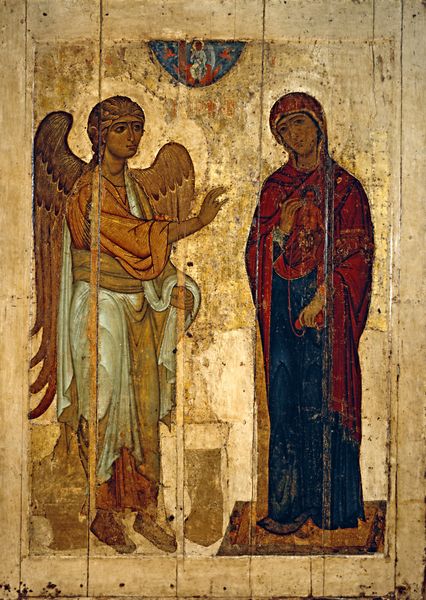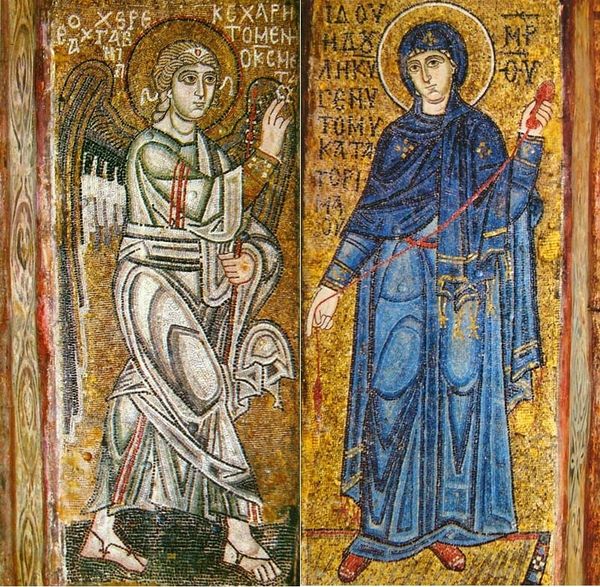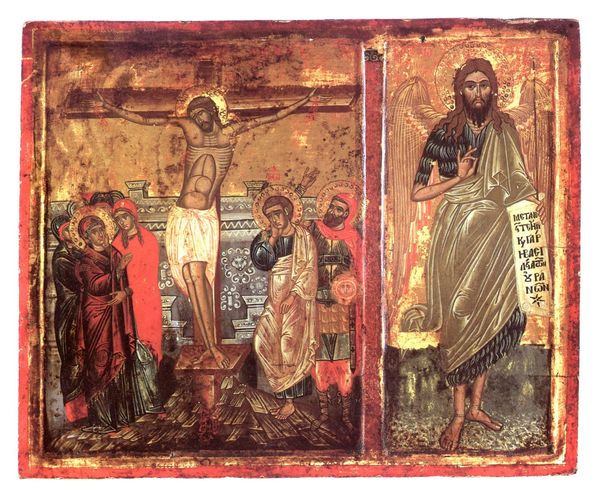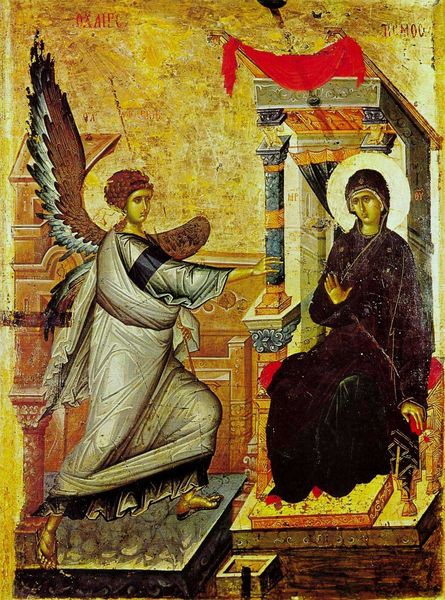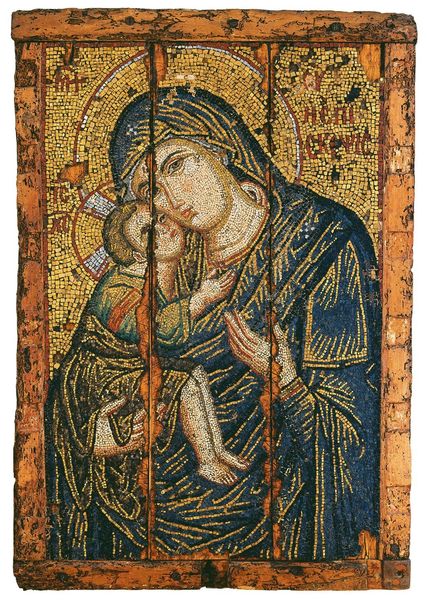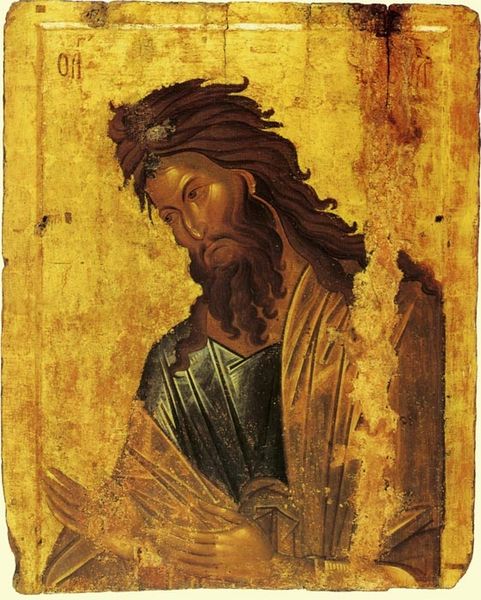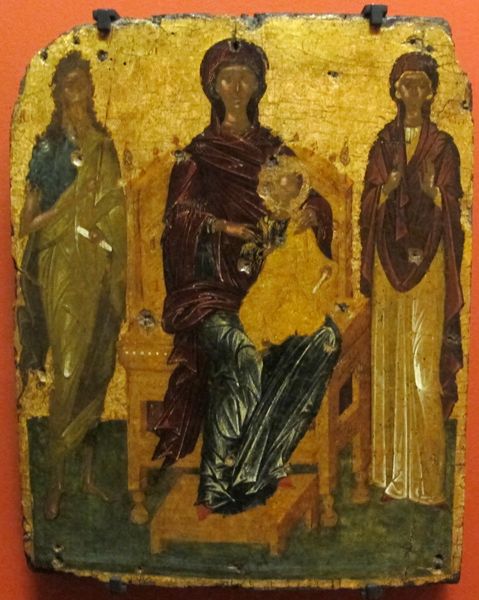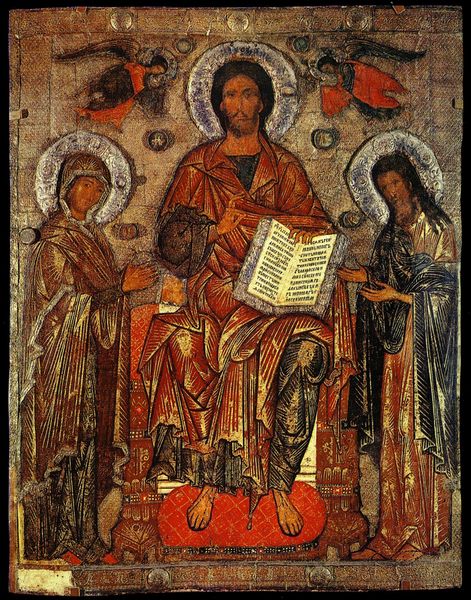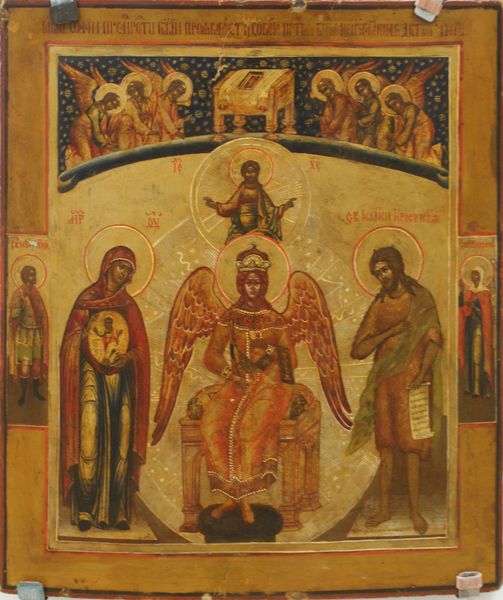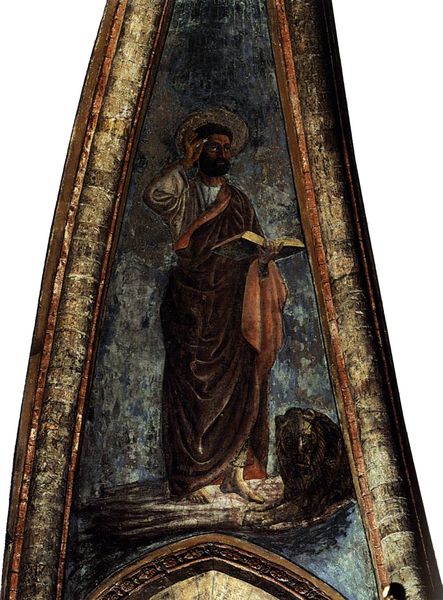
tempera, painting, fresco
#
portrait
#
byzantine-art
#
narrative-art
#
tempera
#
painting
#
mural art
#
fresco
#
oil painting
#
naive art
#
portrait art
Copyright: Orthodox Icons,Fair Use
Curator: The muted color palette and damaged surface suggest this is a Byzantine-style Annunciation, made around 1500. It's currently held at the Pushkin Museum. Editor: It immediately strikes me as a somber take on the Annunciation. The gold background doesn't radiate joy; it feels aged, burdened somehow. Curator: The artist, unfortunately unknown, worked with tempera and likely fresco techniques if we consider other Orthodox icons. That dictates certain technical constraints that might lend to the tone. We can see from how the work is split into two different panels, one where Gabriel approaches Mary, and in the other one the act of annunciation takes place. Editor: Yes, that separation does affect the reading. It makes Mary's individual choice and acceptance, a revolutionary act in its time, stand out even more. We see a humble woman tasked with a truly impossible expectation. The social implications around consent, the female body, and divine will are present whether intended by the artist or not. Curator: Agreed. Though it's also worth looking at the materiality itself. Consider the preciousness of gold leaf – the labour required to create and apply it. And how tempera paint would've demanded a specific type of preparation of the wooden panel. All this physical effort to convey religious significance. Editor: Absolutely. The layers of materials and their careful preparation are not mere aesthetic choices, they underline the intense hierarchical societal structures and perhaps the gender expectations placed upon the Virgin Mary. It's this material dedication by laborers, even those potentially enslaved, that manifests into our perception of her holy purity. Curator: Precisely. The materials literally embody the devotion, adding layers of meaning. Editor: For me, seeing it through that lens challenges traditional patriarchal art history. Curator: A necessary task, no doubt. I find it fascinating how looking closely at production deepens and complicates our appreciation. Editor: And prompts urgent dialogues about labor, gender, and societal values, centuries later. Curator: I will be forever impacted on how to read Orthodox Icons from now on, after that insightful exchange. Editor: It is impossible to unsee a reflection after spotting yourself.
Comments
No comments
Be the first to comment and join the conversation on the ultimate creative platform.
